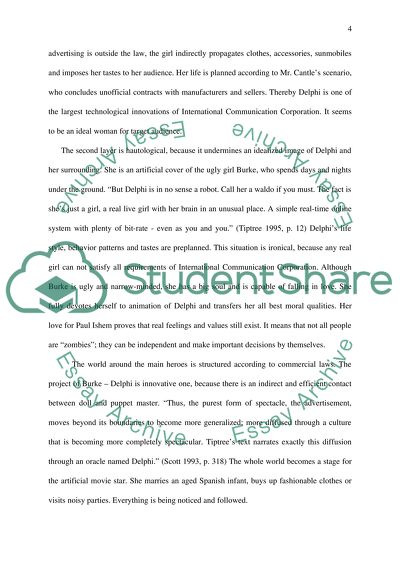Cite this document
(The Girl Who Was Plugged In by James Tiptree: Gender, Identity, and Te Book Report/Review, n.d.)
The Girl Who Was Plugged In by James Tiptree: Gender, Identity, and Te Book Report/Review. Retrieved from https://studentshare.org/literature/1567072-consider-the-ways-in-which-the-performance-of-identity-andor-gender-intersects-with-technology-in-the-girl-who-was-plugged-in-and-pattern-recognition
The Girl Who Was Plugged In by James Tiptree: Gender, Identity, and Te Book Report/Review. Retrieved from https://studentshare.org/literature/1567072-consider-the-ways-in-which-the-performance-of-identity-andor-gender-intersects-with-technology-in-the-girl-who-was-plugged-in-and-pattern-recognition
(The Girl Who Was Plugged In by James Tiptree: Gender, Identity, and Te Book Report/Review)
The Girl Who Was Plugged In by James Tiptree: Gender, Identity, and Te Book Report/Review. https://studentshare.org/literature/1567072-consider-the-ways-in-which-the-performance-of-identity-andor-gender-intersects-with-technology-in-the-girl-who-was-plugged-in-and-pattern-recognition.
The Girl Who Was Plugged In by James Tiptree: Gender, Identity, and Te Book Report/Review. https://studentshare.org/literature/1567072-consider-the-ways-in-which-the-performance-of-identity-andor-gender-intersects-with-technology-in-the-girl-who-was-plugged-in-and-pattern-recognition.
“The Girl Who Was Plugged In by James Tiptree: Gender, Identity, and Te Book Report/Review”. https://studentshare.org/literature/1567072-consider-the-ways-in-which-the-performance-of-identity-andor-gender-intersects-with-technology-in-the-girl-who-was-plugged-in-and-pattern-recognition.


